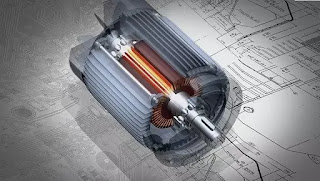Electric and Hybrid vehicle Powertrains.
In a vehicle, Powertrain comprises the main components that generate power and deliver that power to the road or any medium they travel. In EVs, the vehicle is powered at-least in part by electricity and electric motor. For fully electric vehicles, they eliminate engine altogether and solely depends on electric motor.
EV configuration not only include 100% electric vehicles. Various hybrid, mild hybrid, plug-in hybrid vehicles are there. Some differences are there in configuration of Powertrains in these vehicles.
Different Powertrain configurations of EVs are:-
BATTERY ELECTRIC VEHICLES
BEVs are entirely powered by electric energy. Powertrain of BEVs is less complicated and designed according to that. It consist of a large motor, a battery pack and a transmission system. Type of transmission used varies the clutch, gearbox, differential and fixed gearing. There are many variations depending on all the factors mentioned above. However, a basic BEV system is shown below.
Unlike BEVs, Mild hybrid vehicles depends on two energy sources.
- Internal combustion engine'
- Electric motor
In series hybrid vehicles, there is a single path to power the wheels of vehicle, with two energy sources. There is a fuel tank which feeds an engine, which is coupled to a generator to charge the battery. Battery will provide electrical energy to motor or generator to power the wheels through a transmission. Motor/generator is also used to recharge the battery during deceleration or braking.
Schematics of series hybrid electric vehicle powertrain is shown below.
- Hybrid traction
- Electric only traction
- Engine only traction
- Engine traction and battery charging
- Battery charging and no traction
- Regenerative braking
- Hybrid battery charging
PARALLEL HYBRID ELECTRIC VEHICLES
In parallel hybrid electric vehicles, there are two paths to power the wheels of the vehicle.
- Engine path
- Motor path.
- Hybrid traction
- Engine only traction
- Electric only traction
- Regenerative braking
- Battery charging from engine
This mode of operation has both series and parallel energy paths. Motor/generators sometimes include a gearing or power split couples allows the engine to recharge the battery. This configuration can be complex or simple depending on the number of motor/ generator and how they used.
This is also called Complex hybrid, Split parallel hybrid or Power split hybrid.
Schematics are shown below.
Credits:- Publish by MIT Electric vehicle team 2008.
Comment your queries and opinions below. KEEP READING.












Comments
Post a Comment
Please do not enter any spam link in the comment box.